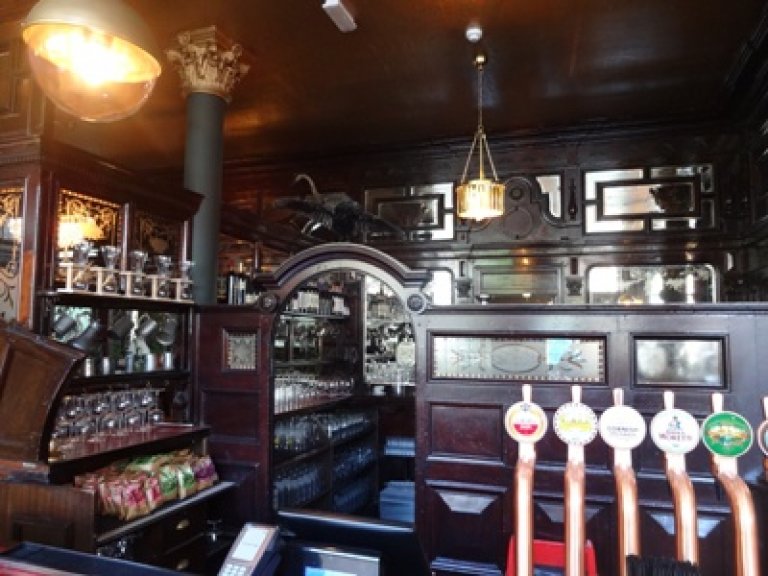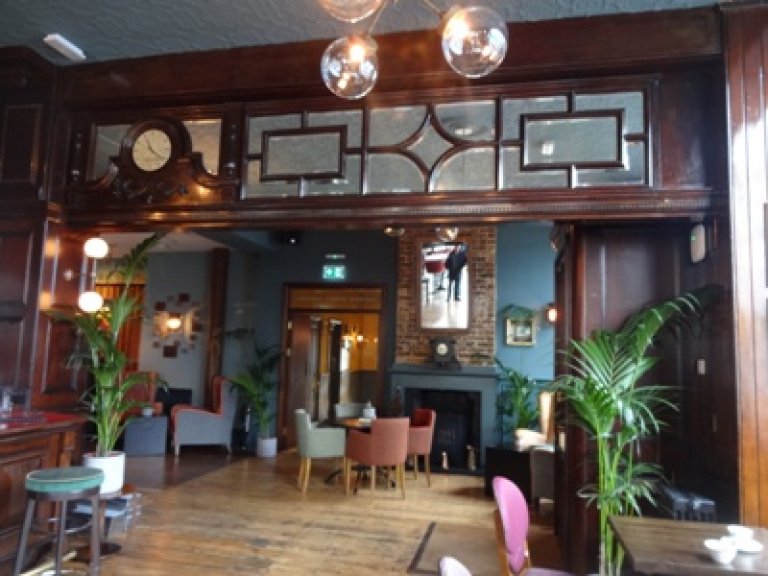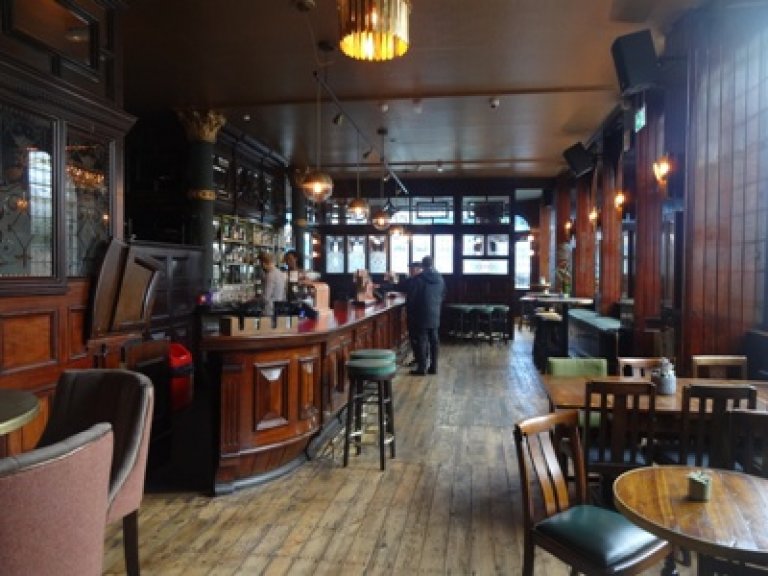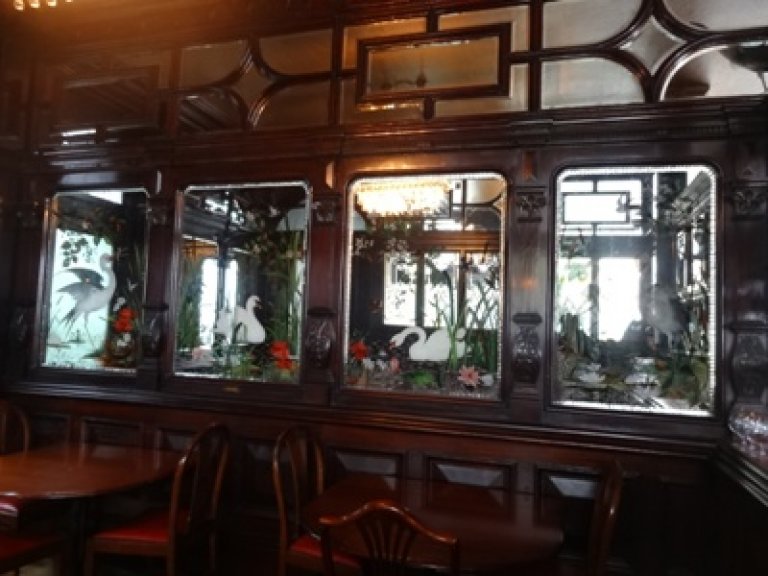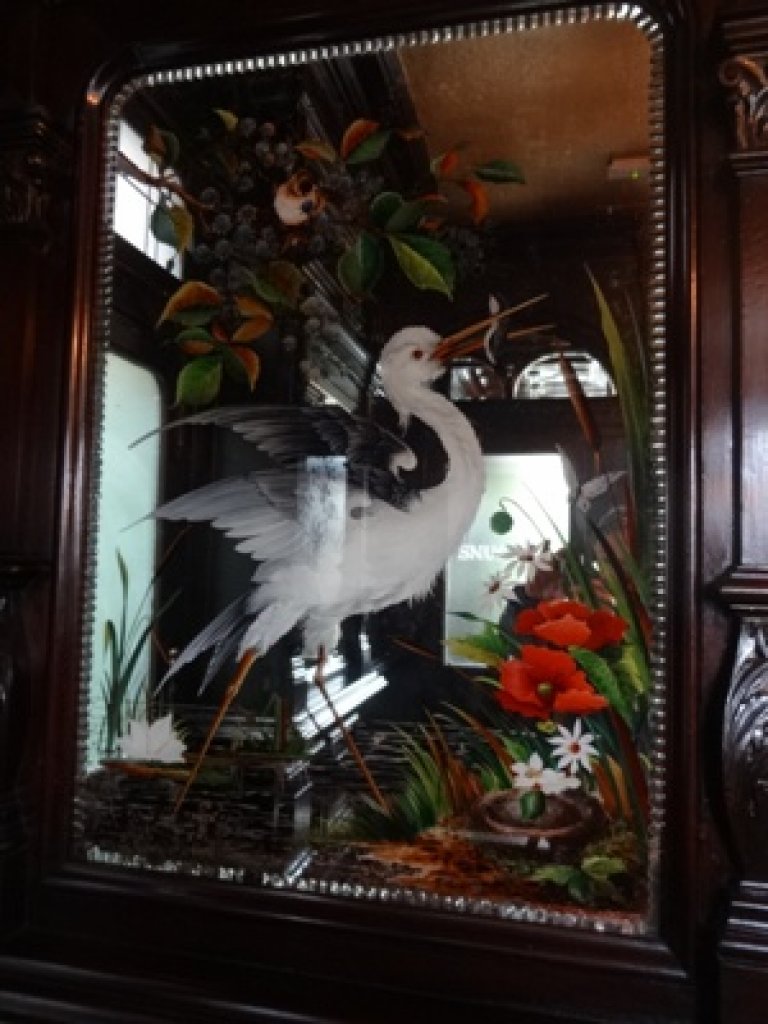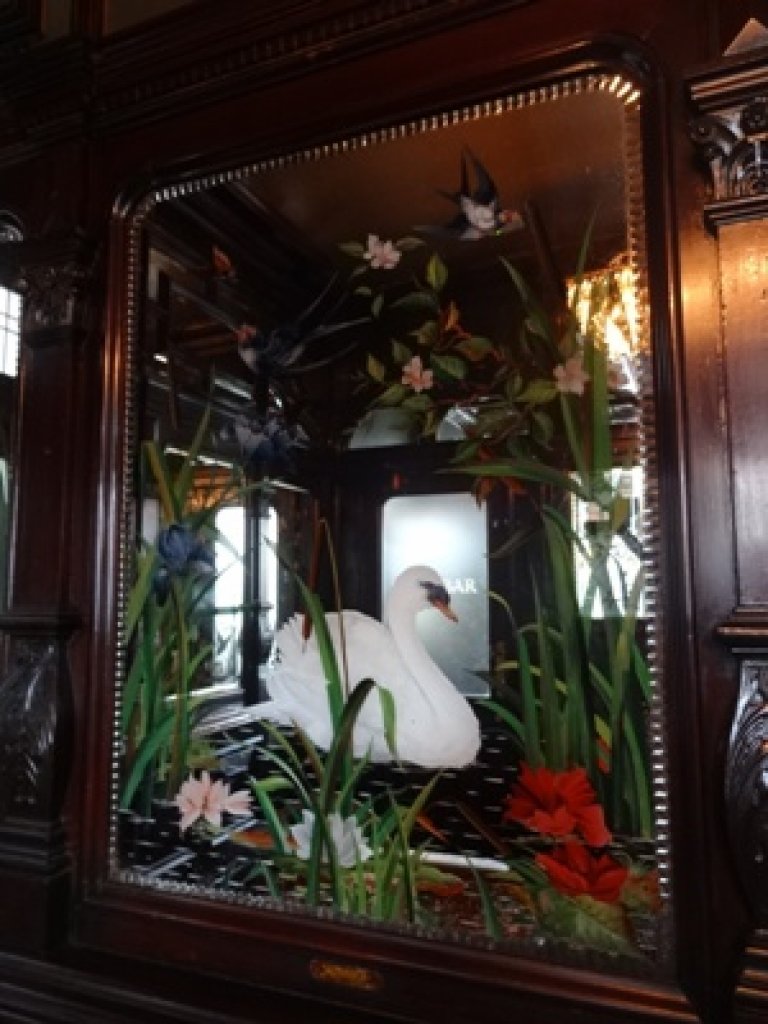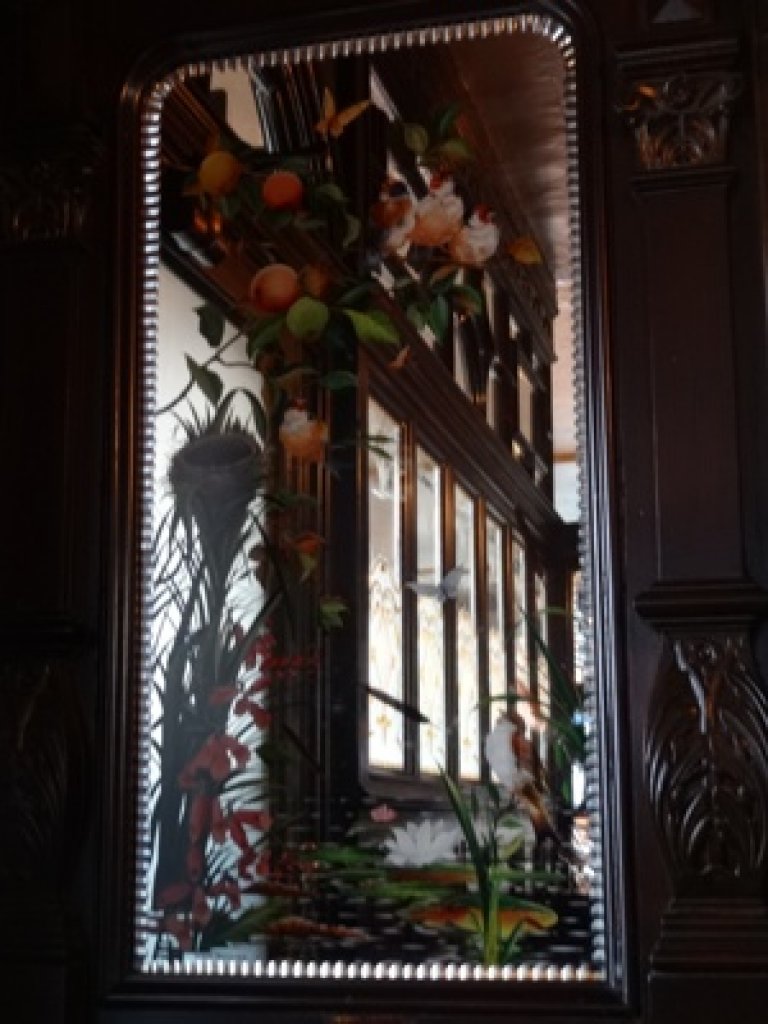Half Moon
10 Half Moon LaneHerne Hill
SE24 9HU
This pub is not only a grade II* listed building, it is also a Three Star pub on the Campaign for Real Ale’s (CAMRA) National Inventory with an interior of outstanding national historic importance, and the description is as follows: “A tremendously exuberant piece of pub architecture with some marvellous fittings to match. The architect was J. W. Brooker and the building went up in 1896. There is a good sense of how the pub was originally divided up into separate rooms. In this case they have been reduced to three. A couple of them are named in the external glazing (which looks like a replacement in the 1930s), which also offers the blandishments of luncheons, snooker and billiards. The rooms are arranged around an L-shaped servery where the panelled counter and excellent bar-back survive. So does the panelling in the public bar. But the biggest reason for making a trip here is the ‘snug bar’, tucked away at the back on the left. This has no fewer than six lovely back-painted mirrors depicting a variety of birds in watery surroundings. Two small labels helpfully inform us that they are the work of ‘W. Gibbs & Sons glass decorators’ of Blackfriars. In this room there is also a screen to the servery – but what a shame the snob screens have been removed from it. Two other screens have etched, cut and coloured glass with pretty lozenges depicting barley, hops and foliage. Four hefty iron columns with Corinthian-style capitals run down the ground floor making sure the upper floors stay where they are. On the 7th August 2013 the pub suffered serious damage from flooding following a local burst water main and was closed for a lengthy period for repair, during which its future seemed uncertain. It was eventually leased by Fuller's with an initially planned summer 2016 reopening but this did not take place until 18 March 2017 after a major refurbishment. There is now a strong emphasis on food and the former billiard room (used in recent times for music events) is now a restaurant. The fixed seating is all from the refurbishment. 12 letting bedrooms have been added.”
The listing description is as follows: “Public house. Dated 1896 on gable. Red brick in Flemish bond with rubbed brick, artificial stone, terracotta dressings; ground-floor with polished granite columns. Mansarded roofs of various descriptions, all turnerised. STYLE: Jacobeathan Revival. PLAN: rectangular corner plan, with corner itself chamfered. EXTERIOR: three storeys stepping down to two to left and rear. Seven-window range, one-window range at corner and five-window range to return. Five flat-arched entrances, that to corner designed as the main one. All windows are flat-arched unless otherwise stated. Ground floor treated as pilastrade of Composite order, supporting an entablature, which is topped by a pediment over each entrance. In the centre of main elevation a bulbous attached column supports a first-floor balcony set under a canted, open porch which is, in turn, topped by a truncated gable and a second-floor balcony with pierced strapwork parapet. This ensemble set in a full-height, round-arched recess, pierced at top by a Serlian window with panelled over spandrel. The fourth to sixth window ranges are treated as a single Dutch-gabled bay with scrolled parapets and finials. A first-floor porch in the corner range with Elizabethan-style columns; round-arched window; window above set in aedicule consisting of pedimented hood that projects above eaves of high mansard roof, topped by a bellcote, which crowns the corner range. Second-window range on return treated as a gabled bay. Entrance porch with polished granite columns to rear of return elevation. On the main elevation, first-floor windows in the third and seventh window ranges are tripartite and round-arched. The 2nd-floor windows alternate with round-arched recesses; the windows have scrolled aprons and plaques of brick cut and rubbed to resemble swags. High hipped roof to second-window range which projects slightly to form a bay. High stacks to centre and end walls, some with floral decoration. To the rear of the return there is a single square stack in the plain of the outer wall. INTERIOR: public bar intact; original panelling and coloured glass; etched mirrors of original design. Some mirrors with painted decoration of good quality depicting birds and flowers. The proliferation of ornament across the surface of this building gives the whole a sense of vital unity through their sheer number, a design approach characteristic of large public houses built c1895.”
The WhatPub link is here: WhatPub/Half Moon
The Pub Heritage Group link is here: PHG/Half Moon
The Half Moon featured on the Daytime Crawl of Herne Hill, Dulwich and Sydenham on 21 February 2004, the Evening Crawl of Brixton, Herne Hill and Camberwell on 14 April 2009, the The Beautiful South: Daytime Crawl of Outer South East London on 22 October 2011, and the Lunar Odyssey: From the Asylum to the Half Moon: Daytime Crawl of Peckham, Nunhead, Dulwich and Herne Hill on 14 October 2017.

